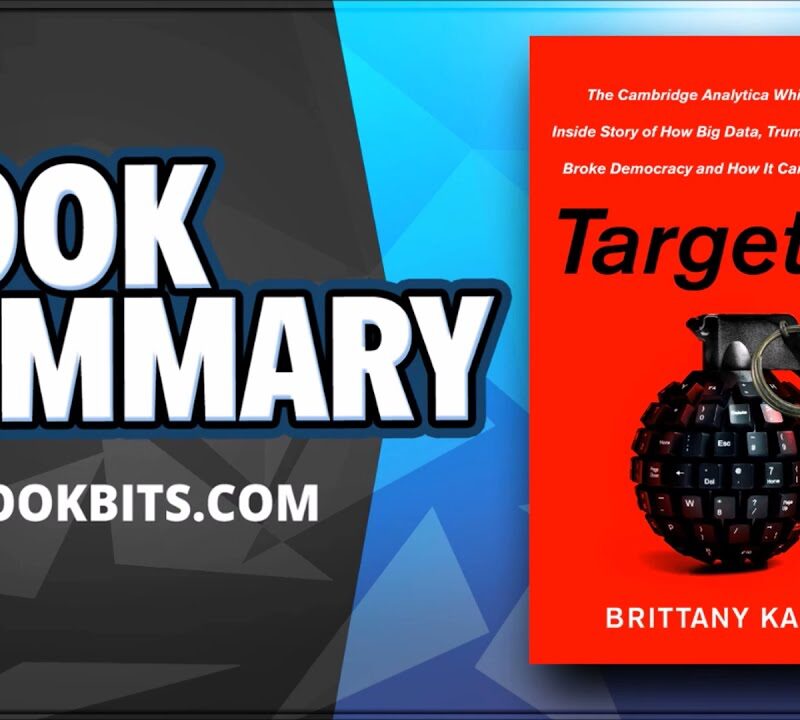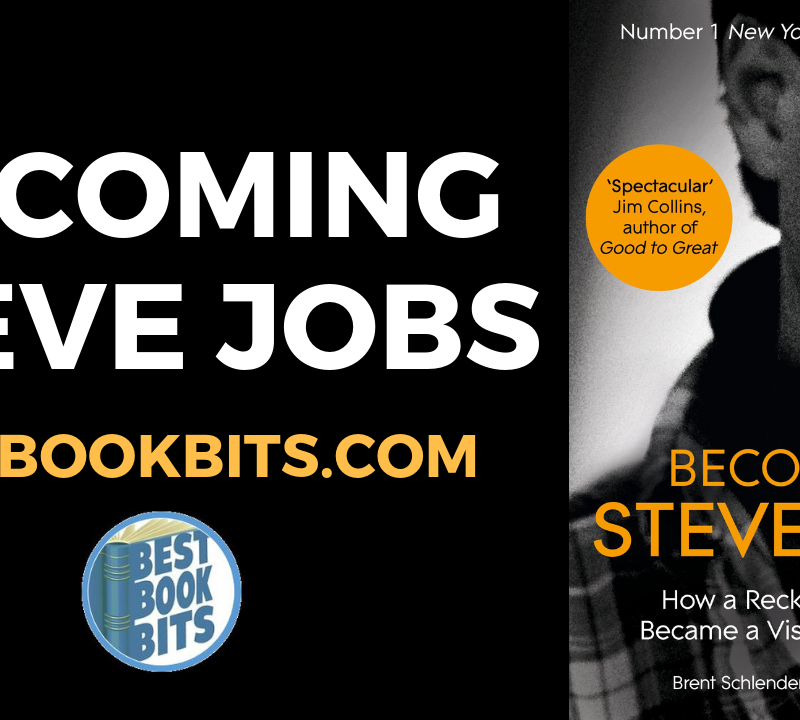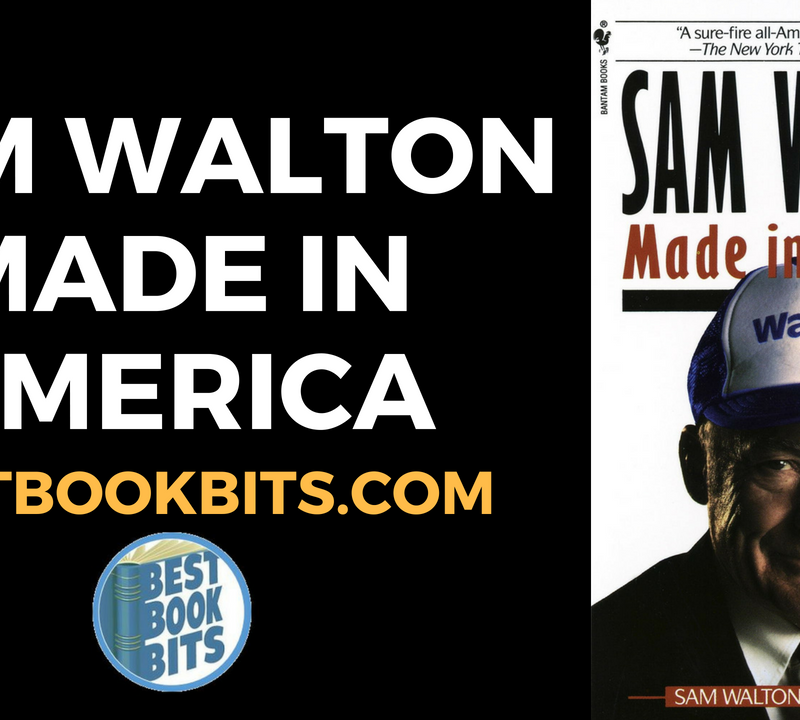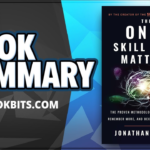★DOWNLOAD THIS FREE PDF SUMMARY HERE https://go.bestbookbits.com/freepdf
? MY FREE BOOK TO LIVING YOUR DREAM LIFE” https://go.bestbookbits.com/first-seven-steps
? SPONSOR BESTBOOKBITS BY USING PATREON https://www.patreon.com/bestbookbits
? SUPPORT BESTBOOKBITS BY CLICKING THE LINKS BELOW
150 PDF Summaries: https://go.bestbookbits.com/150
Coaching Program: https://go.bestbookbits.com/coaching
Subscribe to My Channel: https://www.youtube.com/bestbookbits?sub_confirmation=1
Website: https://bestbookbits.com
Instagram: https://www.instagram.com/bestbookbits
Spotify: https://open.spotify.com/show/0q8OW3dNrLISzyRSEovTBy
Facebook: https://www.facebook.com/michaelbestbookbits
Book Club: https://bestbookbits.com/bookclub/
Mailing List: https://mailchi.mp/d1dfc1907cdb/bestbookbits
Learn from one of the biggest visionaries and entrepreneurs, the mind behind Amazon.
Jeff Bezos worked at the hedge fund D.E. Shaw & Co back in the early nineties. He was a remarkable employee. He had the ability for deep analytical thinking since he was a young boy.
Upon graduating from Princeton in 1986, Bezos worked for a pair of Columbia professors at a company that developed a private transatlantic computer network for stock traders called Fitel. Bezos moved to a financial firm in 1988 but was looking for an opportunity to start his own business. Between 1989 and 1990 Bezos spend time at a startup with a young employee named Halsey Minor who would later start the online news network CNET.
Bezos’s role models and learning strategy
Minor remembers that Bezos closely studied several wealthy businesspeople and that he admired two men in particular. A man named Frank Meeks, a Virginia entrepreneur who had made a fortune with the Domino’s Pizza franchises, and the pioneering computer scientist Alan Key. Bezos often quoted Alan’s observation that “point of view is worth 80 IQ points” a reminder that looking at things in new ways can enhance one’s understanding.
Jeff also took every possibility he could to learn something. Minor said that he learned something from every person he knew. Bezos tended to think analytical about everything including relationships. He famously tried to increase his “woman flow” by taking ballroom dance classes and increase his n+ woman exposure.
Amazon’s focus on the customer
From the very beginning, it was Jeff’s priority to focus on customer satisfaction. The online store got its current name after Bezos pored through a dictionary and found the word Amazon. It resembled what he envisioned, earth’s largest river — > Earth’s largest bookstore.
Amazon’s focus on customer satisfaction leads to a continual development of new features that traditional publisher often found doubtful, like the customer reviews for instance. Traditional publishers resisted the customer review feature because they thought it would harm sales. Similarly, the decision to make a platform for individuals to sell used products met with opposition at first.
Bezos realized the potential e-commerce had over traditional businesses and explored it with features like product recommendations which pop up based on previous shopping behavior. This feature increased sales consistently as customers stumbled on relevant products they wouldn’t have discovered otherwise.
“If you want to get to the truth about what makes us different, it’s this, ” Bezos says, “We are genuinely customer-centric, we are genuinely long-term oriented, and we genuinely like to invent.
Jeff’s frugality and the company’s sometimes harsh working environment
Jeff has an obsession with frugality. He thinks that it helps Amazon concentrate on the important things like customer satisfaction. Amazon’s employees have to pay for parking permits themselves. There are no free snacks and executives are required to fly coach.
Bezos used to say “You can work long, hard, and smart, but at Amazon, you can pick only two out of three.” A young CEO liked to rephrase it to “You can work long, you can work hard, you can work smart, but at Amazon, you can’t choose two out of three.”
Over the years, Amazon has repeatedly hired tens of thousands of temporary workers on each holiday season for ten to twelve dollars an hour. Amazon’s approach is to establish fulfillment centers in economically weak areas to exploit cheap labor and the ability to fire workers once the season is over.
In colder climates, company managers skimped on the installation of air-conditioning in the fulfillment centers and instead used protocols to deal with heat waves. If temperatures spiked above 100 degrees, five minutes were added to morning and afternoon breaks, which normally were fifteen minutes long. The company also installed fans and handed out free Gatorade. But all these moves were insufficient in 2011 when a brutal heat wave lead fifteen workers were taken to the hospital due to heat-related symptoms. A newspaper reported that Amazon — in an attempt to deal with employees as they dropped — hired a private ambulance company to have paramedics stationed outside the FC’s during the heat wave.
Amazon’s management and corporate culture
Bezos insists that employees don’t use PowerPoint decks or slides in company meetings. Instead, employees have to write six-page narratives laying out their points. Bezos thinks that doing so fosters critical thinking.
New products have to be presented like documents of a press release. The goal is to frame the proposed initiative in a way a customer might hear about it the first time.
Teams at Amazon have usually fewer than ten employees per unit, following the two-pizza rule. The two-pizza rule is a quirk at Amazon, implying that no team should have more members than can be fed with two pizzas in late working hours. Bezos thinks that big meetings are unproductive and likes to replicate Darwinian principles of survival between small teams. Small teams are used to tackle Amazon’s biggest problems independently. They have to compete with each other for resources, sometimes duplicating efforts.
Jeff even went so far as to implement a “fitness function” for each group. The function was a linear equation that each team had to use to measure its impact without ambiguity. Bezos would then personally approve each equation and track each team’s evolution over time.
Bezos used this style of management as a tool to handle the complexity of his organization by breaking it down into the most basic parts, let them compete in a type of artificial evolution, and then track their progress. The goal was to attain great results but the fitness function, in particular, clashed with some fundamental aspects of human nature. Employees were uncomfortable to have to set their own framework of evaluation if they might get judged harshly by the result. The incentive was that teams ended up making their formulas ever more complex and did not help to get the job done.
Decentralization and independent decision-making over communication
Bezos often has passionate aha moments where his blood vessels are pulsing, and his face turns red. In one of these moments, he told young executives that emphasis on communication in a large organization is completely wrong. Instead, he told them that communication is a sign of dysfunction. It means that people aren’t working together in an organic, closed way. Instead of improving communication, the focus should be to figure out how to communicate less with each other, not more.
Bezos also made it clear that a hierarchy isn’t responsive to change. The emphasis should be on decentralization and independent decision-making. Coordination is wasted time and people closest to the problem usually are in the best position to solve them.
Amazon’s meetings are extremely data driven. Employees need to back their arguments up with hard data which enables unambiguous decision-making in honor of the maxim “Numbers don’t lie.”
Vision and long-term thinking
Bezos is a visionary, similarly to Elon Musk. He doesn’t shy away from temporary losses if they bring a long-term advantage to Amazon. In fact, that is how he established the Kindle as the leader in the e-book market. When Amazon first started to offer its Kindle, Bezos insisted that there should be a plethora of books already available for Kindle and that the book price should be lower than physical books. He set a flat price of $9.99 for the digital versions of books, following his gut’s call and Apple’s successful ninety-nine-cent price tag for digital files on iTunes.
Both decisions, especially the price was confronted with a lot of resistance from book publishers. First, they had to find a way to digitalize a great percentage of their books. Then they were forced to comply with the lower digital price eventually. At first, however, Amazon bought copies of the e-books for the same price as their printed equivalents, which meant that the company lost money on every book. Bezos was all right with it because he knew that he would establish Amazon as a market leader that way and book publishers would have to lower their prices sooner or later once Amazon would be the go-to marketplace for e-books.
Bezos pattern for long-term strategies then is to take short term loss to get long term advantages. He often said that Amazon had a “willingness to be misunderstood.” Jeff also said that he would take a missionary over a mercenary company every day, alluding to a concept from the 2001 business philosophy book The Monk and the Riddle. In the book, missionaries are portrayed as having righteous goals and are trying to make the world a better place, while mercenaries are pursuing money, power, and are willing to run over anyone to get it.
Bezos’ private projects
Bezos dreamed about making a huge impact on big things like space travel from an earlier age. The billionaire status he got from Amazon’s success gave him the possibility to tackle on some bold things. His secret company Blue Origin is such a program. Blue Origin works on revolutionary space travel technology and operates largely in secret.
Jeff also became the biggest financial backer of a giant, 10,000-Year Clock. The clock is a mechanical timepiece designed to last millennia, and in Bezos’ words “The symbol is important for a couple of reasons. If [humans] think long term, we can accomplish things that we wouldn’t otherwise accomplish.” In other words, Bezos believes that the human species should think in the long term and that the clock can deliver such a powerful message.
Bezos’ Pragmatism
Since Amazon’s founding, Bezos has put emphasis on acting rather than overanalyzing. Overanalyzing often results in missed opportunities and lost time. Often the possible implications and outcome are not analyzable anyway. In fact, the very founding of Amazon was a giant risk which many other people wouldn’t have committed to, at least not if it means leaving a well-paid job as a hedge fund manager.
Bezos even created a “Just Do It” award for self-motivated employees who created something on their own initiative — even if it wasn’t successful — as long as they acted with resolve. The price, of course, was frugal, like winning a pair of Nike sneakers that belonged to a basketball player who worked at Amazon.
Amazon Web Services, Amazon’s expansion
Once Amazon was established as an online book retailer, Bezos could focus on expansion, something he wanted to do from the beginning. After all, Amazon was destined to become the everything store.
Amazon expanded to the music, film, electronics and toys industry. One particular revolutionary invention was Amazon Web Services or AWS in short. AWS turned into the first successful, widely used, commercial cloud computing platform. Business and organizations like NASA, the US government, and the CIA all started using AWS.
It all began in 2002 when O’Reilly and other publishers had a need to track their book rankings on Amazon. O’Reilly presented a tool called Amarank to Bezos. It consisted of a web scrapper, a clunky process in which an algorithm parses a website, trying to isolate interesting data. The process is inefficient and buggy, which is why O’Reilly suggested to Jeff, that Amazon should develop application programming interfaces or API’s. API’s are tools which allow third parties to communicate with an application in a clean way, for example, to harvest data about prices, products, and sales ranking.
Following O’Reilly’s request, Bezos arranged meetings with his Associates and even invited O’Reilly to speak to his engineers about the importance of becoming a platform. Bezos himself quickly adopted the Web’s philosophy of openness and preached inside Amazon about how these new tools would enable developers to surprise them with new ideas.
Bezos’ focus on this new approach also happened due to his love for a book called Creation, by Steve Grand, the developer of the 1990’s game called Creatures. The game allowed players to guide and nurture organisms which had a simple form of artificial intelligence or AI. Grand wrote that his approach to AI was to focus on designing simple computational building blocks called primitives. And then let them interact and create complex, surprising behavior. Grand wrote that sophisticated AI could emerge from cybernetic primitives through evolution.
The book was widely discussed at Amazon and formed the basis of a new philosophy of the company’s own infrastructure. To foster creativity, Amazon should emulate nature’s principle of evolution, that is, create the primitives necessary for developers to create something interesting, and then get out of the way. Instead of trying to guess what services developers might want.
The primitives would form small, flexible and simple components for developers to work with. Bezos’ approach was that developers are like alchemists, and he wanted to do everything possible to let them do their alchemy without getting in their way.
Of course, Jeff’s vision for Amazon goes muchfarther. He plans to expand to the grocery business (Amazon Fresh), aswell as getting into the Smartphone, television, and 3D printing business, toname a few. One thing is for sure, as long as Bezos is in charge, Amazon willcontinue to move, evolve, and do things in unusual ways.
★DOWNLOAD THIS FREE PDF SUMMARY HERE https://go.bestbookbits.com/freepdf
? MY FREE BOOK TO LIVING YOUR DREAM LIFE” https://go.bestbookbits.com/first-seven-steps
? SPONSOR BESTBOOKBITS BY USING PATREON https://www.patreon.com/bestbookbits
? SUPPORT BESTBOOKBITS BY CLICKING THE LINKS BELOW
150 PDF Summaries: https://go.bestbookbits.com/150
Coaching Program: https://go.bestbookbits.com/coaching
Subscribe to My Channel: https://www.youtube.com/bestbookbits?sub_confirmation=1
Website: https://bestbookbits.com
Instagram: https://www.instagram.com/bestbookbits
Spotify: https://open.spotify.com/show/0q8OW3dNrLISzyRSEovTBy
Facebook: https://www.facebook.com/michaelbestbookbits
Book Club: https://bestbookbits.com/bookclub/
Mailing List: https://mailchi.mp/d1dfc1907cdb/bestbookbits













